
by Paul Komor, CSTPR Faculty Affiliate and Suzanne Tegen, CSTPR Visiting Scholar
We are at the early stages of a major transformation of our energy system. And that transformation is being driven by thoughtful government intervention that promotes human health and protects the natural environment. At a time when the very concept of progressive and science-based environmental policy is under attack, this can serve as an example of how policy is supposed to work: policy boosts market demand for renewable energy, which in turn inspires technological innovation, catalyzes private capital investment, and transforms markets.
Here’s that story…but first, a short refresher from Policy 101: One role for government is to provide and protect public goods: products and services that provide public benefits, and for which use by one individual does not reduce availability to others. Examples include national defense, fresh air, and street lighting.
To provide and protect public goods and to solve overarching societal challenges (e.g., climate change), governments devise policy tools – informed by publicly-funded research – that guide, nudge, and steer private sector investment and decisions to take societal issues into account. As the private sector responds, governments gradually withdraw these policy tools, because the market internalizes those former externalities. Markets are created, private sector investment grows, technical innovation blossoms, and problem solved. Voila!
But it doesn’t really work that way, says the policy realist. That sounds good in theory, but in the brutal reality of policy-making, politics and special interests intervene and disrupt the process – resulting in policy decisions that don’t solve societal challenges or protect the public good, economic inefficiencies, and stifled innovation.
Well, in renewable energy, it really has worked that way. Over the last 15 years, governments have used a handful of innovative and thoughtful policies to promote renewable energy. And those policies are succeeding:
- Since 2010, wind power costs have dropped 68%¹ and solar photovoltaic (PV) costs have dropped ~50%.²
- In 2016, wind and solar PV accounted for over 60% of new electricity generation in the U.S. (EIA, 2017).
- In 2015, renewables – mostly wind and solar PV – accounted for more than half of new electricity generation worldwide. Renewables worldwide now provide more electricity than coal. (IEA, 2016b).
What are those policies? In the US, many states use Renewable Portfolio Standards (RPSs), which are mandates that electric utilities obtain a minimum percentage or amount of electricity from renewable sources. Although this policy tool has seen its share of controversy – notably the fear that it would drive up electricity prices – recent analyses find that electricity price impacts are minimal and public benefits significant (Wiser, R. et al, 2016; Heeter, J. et al. 2014). And these RPSs are phasing out, just as they should: as renewable energy adoption shifts from policy-driven to market-driven, utilities will meet their RPS requirements and the RPSs will fade away.
Also contributing to renewable energy’s massive recent growth and cost reductions are federal tax credits. Tax credits can be risky, as they can lead to a politically influential constituency that is loathe to give them up. In the case of renewable energy tax credits, however, Congress passed thoughtful legislation in 2015 that gradually removes them, and 2019 is the last year that renewable energy projects can qualify for the credit (U.S. Department of Energy, 2015).³
Other countries are using different policy tools (see e.g., Cox et al, 2015). Auctions for renewable energy are quite popular, and have been very successful. South Africa, for example, used renewable energy auctions to attract USD 14 billion in new private sector investment, and saw renewable energy prices drop by ~50% during just 2.5 years (Eberhard, A. et al. 2014). Economic development gains were notable, and primarily benefited rural communities. Noted a recent World Bank review, “[South Africa’s renewable energy auction program] has successfully channeled substantial private sector expertise and investment into grid-connected renewable energy in South Africa at competitive prices” (Eberhard, A. et al., 2014).
Wind and solar PV are expected to see continued rapid growth (IEA, 2016a). Adoption of wind and solar PV technologies, going forward, will increasingly be driven by market prices as the policies that support them fade away. The public benefits (notably improved air quality and reduced carbon emissions) will flow to all. And thoughtful policy gets the credit.
1. This is for US, 2010-2016. Source is Wiser, R. and M. Bolinger, 2016.
2. This is for US utility-scale solar PV, 2010-2015. Source is Bolinger, M. And J. Seel, 2016. During that same time period, US residential solar PV prices fell 43%. Source is Barbose, G. and N. Darghouth, 2016.
3. It’s interesting to note that worldwide fossil fuel subsides have been decreasing as well, due largely to energy pricing reform. Yet fossil fuels subsidies are still more than twice as large as renewables subsidies (IEA 2016a).
References
Barbose, G. and N. Darghouth. August 2016. Tracking the Sun IX. Berkeley, CA: Lawrence Berkeley National Laboratory.
Bolinger, M. and J. Seel. August 2016. Utility-Scale Solar 2015. Berkeley, CA: Lawrence Berkeley National Laboratory.
Cox, S., S. Tegen, I. Baring-Gould, F. Oteri, S. Esterly, T. Forsyth, R. Baranowski. May 2015. Policies to Support Wind Power Deployment: Key Considerations and Good Practices. NREL/TP-6A20-64177. Golden, CO: National Renewable Energy Laboratory.
Eberhard, A. J. Kolker, J. Leigland. May 2014. South Africa’s Renewable Energy IPP Procurement Program: Success Factors and Lessons. Washington, DC: World Bank Group.
EIA (United States Department of Energy, Energy Information Administration), “Renewable generation capacity expected to account for most 2016 capacity additions,” article dated 10 January 2017.
Heeter, J., G. Barbose, L. Bird, S. Weaver, F. Flores, K. Kuskova-Burns, and R. Wiser. 2014. A Survey of State-Level Cost and Benefit Estimates of Renewable Portfolio Standards. NREL/TP-6A20-61042 Golden, CO and Berkeley, CA: National Renewable Energy Laboratory and Lawrence Berkeley National Laboratory.
IEA (International Energy Agency). 2016a. “Fact Sheet: World Energy Outlook 2016.”
IEA (International Energy Agency). 2016b. Renewable Energy Medium-Term Market Report 2016, 2016.
United States Department of Energy WINDExchange. 2015. Congress Passes Extension of Production Tax Credit, Investment Tax Credit. Published December 18, 2015.
Wiser, R., G. Barbose, J. Heeter, T. Mai, L. Bird, M. Bolinger, A. Carpenter, G. Heath, D. Keyser, J. Macknick, A. Mills, and D. Millstein. 2016. A Retrospective Analysis of the Benefits and Impacts of U.S. Renewable Portfolio Standards. NREL/TP-6A20-65005. Golden, CO and Berkeley, CA: National Renewable Energy Laboratory and Lawrence Berkeley National Laboratory.
Wiser, R. and M. Bolinger. August 2016. 2015 Wind Technologies Market Report. Berkeley, CA: Lawrence Berkeley National Laboratory.
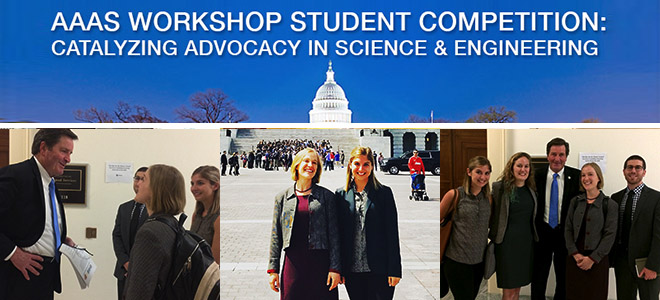


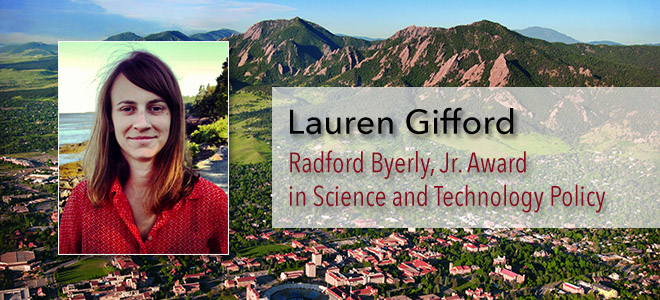



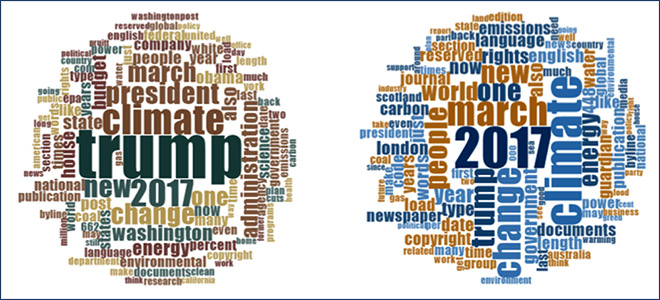
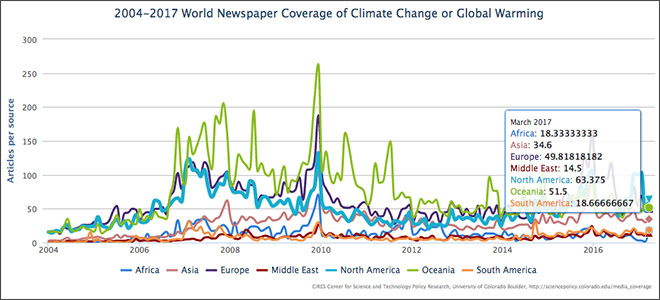

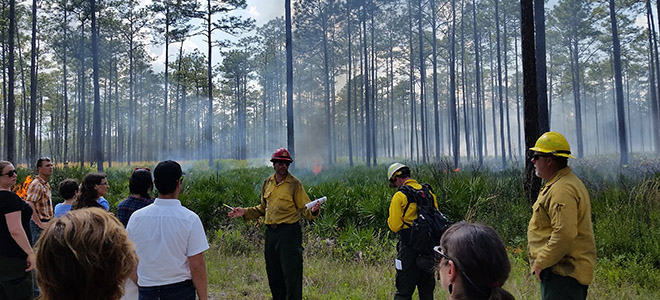
AAAS “CASE” Workshop Reflections by Caroline Havrilla
Each year CSTPR hosts a competition to send two CU Boulder students to Washington, DC to attend the AAAS “Catalyzing Advocacy in Science and Engineering” workshop.
During the workshop portion, the winners learned about the structure and organization of Congress, the federal budget and appropriations processes, and tools for effective science communication and civic engagement. In addition, the winners participated in interactive seminars about policy-making and communication.
Below are comments by Caroline Havrilla about this year’s workshop. Read also comments by the other AAAS “CASE” winner, Adalyn Fyhrie.
Participating in the 2017 AAAS Catalyzing Advocacy in Science and Engineering (CASE) Workshop in Washington, D.C. was a truly transformative experience for me as a scientist. The three‐day workshop was a thought‐provoking crash course in science policy, in the company of a diverse cohort of scientists from around the country, and exposed me to the complex world of policymaking. Each day of the workshop was jam‐packed with a cohesive line‐up of sessions with talks from speakers who shared with us their expertise on a wide range of topics in science policy. We learned about policymaking, the federal budget process, and importantly, how scientists can advocate for science and contribute to decision making within the science policy realm.
One consistent message throughout the workshop was the important distinction between “policy for science” and “science for policy.” Policy for science mostly refers to the federal budget process and the allocation of federal funds to scientific research and development. Science for policy, on the other hand, is the process whereby scientists communicate science to policymakers to inform policy-making. During the CASE workshop, my cohort first learned about policy for science, mainly focusing on the many challenges of the federal budget process, and how these challenges impact science. One particularly striking issue we were exposed to concerned the balance, or perhaps more fittingly, the imbalance, between mandatory and discretionary spending in the US federal budget. Mandatory spending, comprised of entitlement programs like Medicare, Medicaid, and Social Security, makes up about two thirds of the circa $4.1 trillion US federal budget. Discretionary spending on the other hand, makes up only a third of the federal budget. Because there is bipartisan opposition to cutting entitlement programs, when the budget needs to be trimmed, cuts are made to the non-defense discretionary budget, which is already a fairly small slice of the budgetary pie. Unfortunately, this is the category in funding for scientific organizations like NSF, NASA, and the EPA fall, making those programs vulnerable to budget cuts when their activities are not deemed “necessary” spending. For me, learning about this aspect of the federal budget process brought into perspective the overarching challenges of continued federal science funding, and made it clear that effective advocacy for science is critical.
After learning about the intricacies of policy for science, we turned our focus science for policy, and how to become more effective science communicators. According to many of the science policy officials we met with in Washington, scientists often miss out on valuable opportunities to effectively communicate their science for policy because their messages often misalign with the needs of policymakers. This misalignment often results from fundamental differences in what information science and policy spheres incorporate into their decision making processes. Policymakers often make decisions based on big‐picture, culturally‐based value systems, while, in contrast, scientists typically make decisions based on highly specific, data‐based evidence. Scientists can more effectively communicate with policymakers by 1) recognizing this communication barrier exists, and 2) incorporating storytelling and discussions of the applications and benefits of their research to addressing broader societal issues. Science is only one small piece of the decision making process, but by aligning research to economic, environmental, and societal outcomes, we can better advocate for incorporation of science into policymaking. On Hill Visit Day, the last day of the CASE workshop, my cohort members and I had the incredible opportunity to visit the Hill and advocate for scientific research with Congressional members and their staffers. With the help of the AAAS staff and our Hill guide, Heather Bené (staff member at CU’s Office of Government Relations), we had the opportunity to practice communicating our science and advocating for the incorporation of basic and applied scientific research into policymaking.
I am tremendously thankful to the University of Colorado Center for Science and Technology Policy Research (CSTPR), the Center for STEM Learning, and Graduate School for sponsoring my participation in the CASE workshop and look forward to incorporating science policy in my future career.
Save